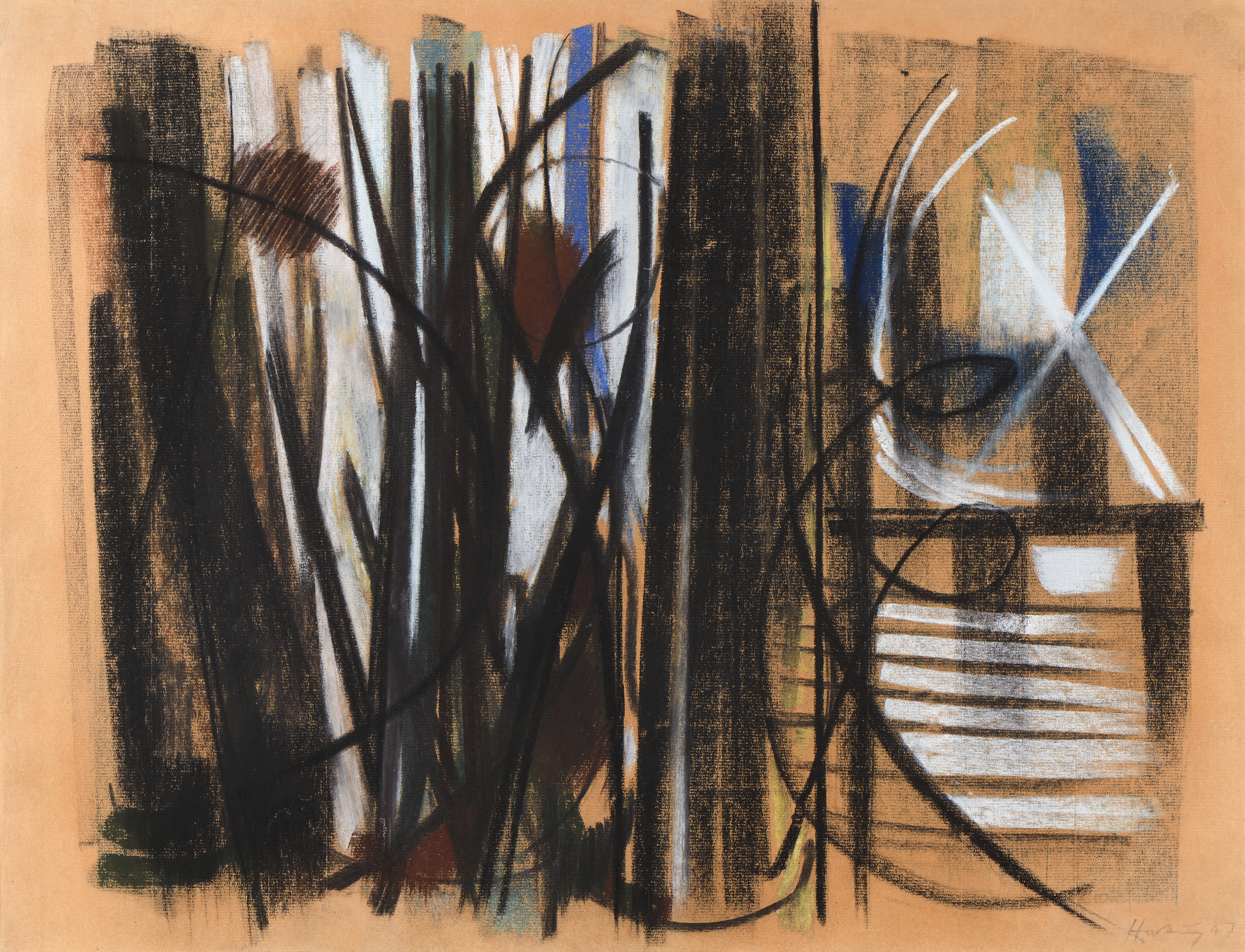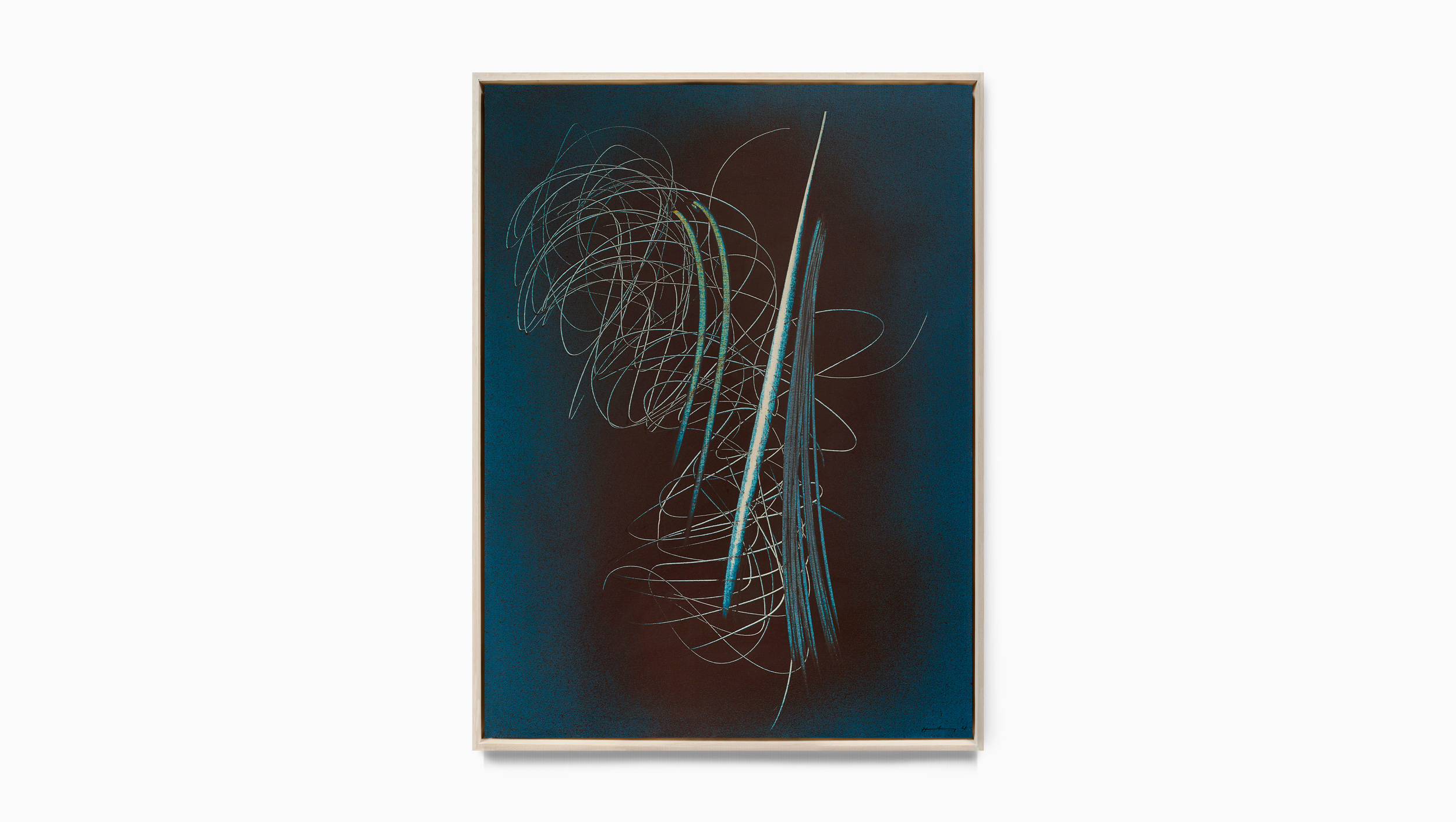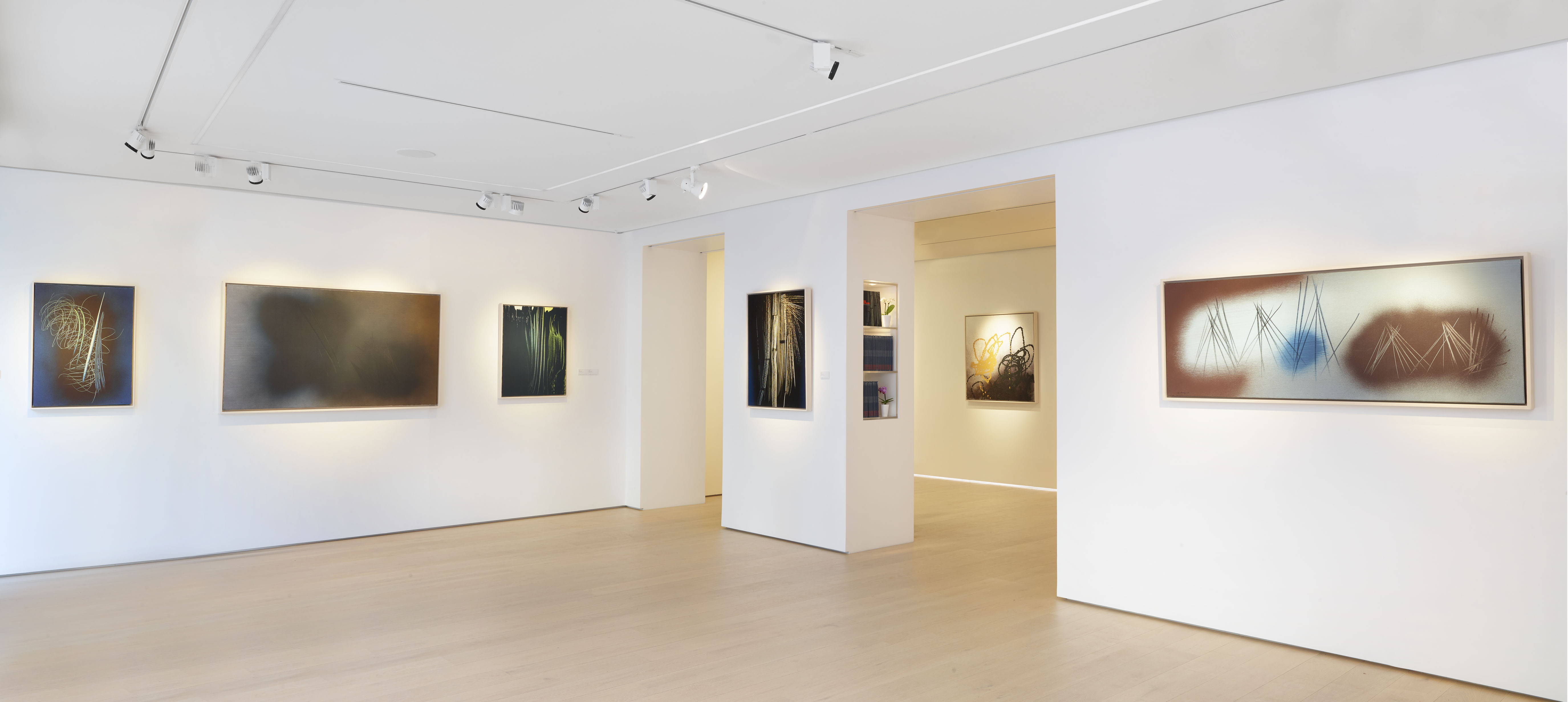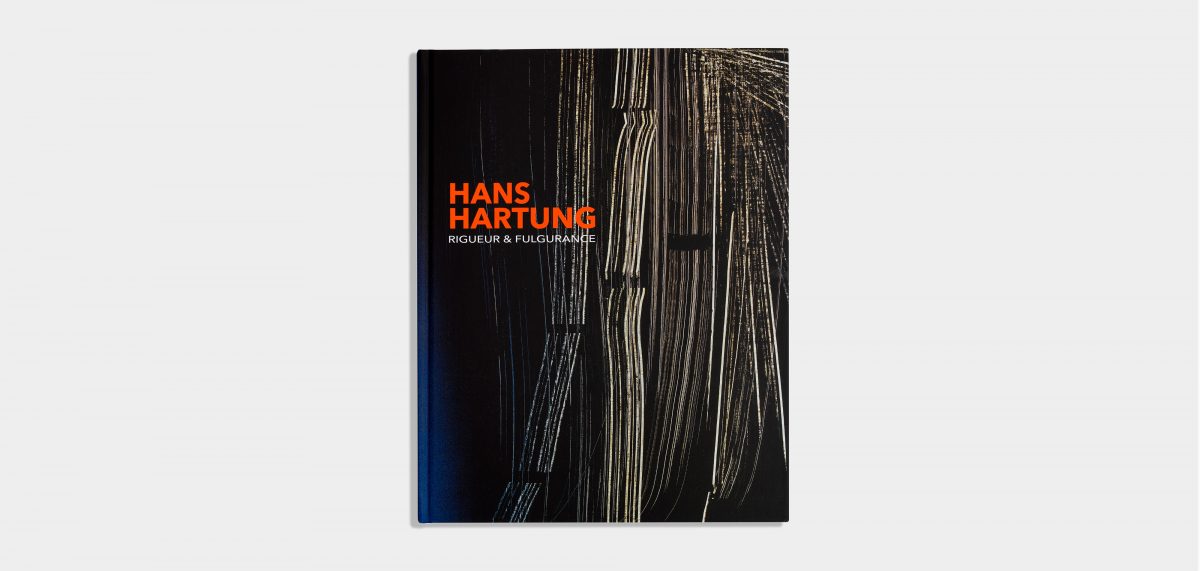Hans Hartung’s lyricism and dynamism combine subconsciousness and thought-out elements. In his work, technique is fundamental, from the preparation of the canvas to its ultimate realisation. His glazing and colour choices are studied, treated. As a result, it naturally followed that the development of a painting was slow. It sometimes took him weeks to finish a painting. He painted using superimposed layers until he obtained the desired tone, which harmonised with the overall composition. That said, the rigour of his meticulous, scholarly research remains inappreciable for the spectator. Unlike the paintings of so many of his contemporaries, his work presents neither splashes nor drips. For decades, his work imposed itself as being impeccably “clean.”
Hans Hartung | Rigueur et fulgurance
October 19th - December 18th, 2018By means of a dozen canvases and exceptional works on paper and cardboard, this exhibition reveals the two most beautiful aspects of his technique, ceaselessly experimented with from the post-war years and until the end of his life: rigour and brilliance.
We chose this title because it seemed to us to succinctly describe the pictorial life of the artist.
In his early days, Hans Hartung gave the impression of instantaneous, lyrical and spontaneous gestures, but his passion for mathematics and rationality had an important place in his work. The spontaneity of his works on paper was transformed into a meticulous squaring up. This was Hartung’s means of expression on his canvases until the end of the 1950s: a process characterised by great rigour.
The technical research undertaken by the artist with the manufacture of new tools/brushes, or following the use of new materials, vinyl and acrylic paint, consolidated Hans Hartung’s status as the master of innovation.
The Seventies represented “Le champ des Oliviers,” the property of Antibes, where the artist would develop his final artistic research implemented during the 60s: sprays and projections.
From the 1970s and until his death in 1989, Hans Hartung continued to create highly experimental art. The audacity of the 1960s was transformed into an art of “sensation” which the painter expressed in an atmospheric way on large formats. These immense canvases bear witness to a struggle: a eighty-five-year-old man whose inner strength manifested itself through his dazzling sprays that would prove to have a lasting influence on his contemporaries.
Read more
“Lyrical abstraction is the only pictorial expression that directly connects us to spiritual things. Our attachment to the material means that it escapes us.”
Hans Hartung

Hans Hartung in his studio ©Fondation Hartung Bergman

Much later, the pieces were subjected to violence: scratching, scraping, tearing. These interventions organise themselves in the painted space, often sustained or highlighted by the intentional gesture of stripes which takes over the canvas or paper. Once again, there is a subtle interplay between the outpourings of Hans Hartung’s feelings confronted with the creative space. Here, lyricism supported by emotion takes on an unprecedented dimension. The artist, settled in his house in Antibes, in the twilight of his life and with nothing left to prove, allowed himself every audacity. This was the honesty of an artist who understood that transcending his laurels was the privilege of an entirely unfettered man.

Visit the exhibition
Virtual tour
Artists
- Karel Appel
- Victor Brauner
- Alberto Burri
- Alexander Calder
- Lynn Chadwick
- Geneviève Claisse
- Claudine Drai
- Jean Dubuffet
- Jorge Eduardo Eielson
- Sam Francis
- Simon Hantaï
- Hans Hartung
- Le Corbusier
- Fernand Léger
- Mao Lizi
- Georges Mathieu
- Alicia Penalba
- Serge Poliakoff
- Judit Reigl
- Jean-Paul Riopelle
- Gérard Schneider
- Pierre Soulages
- Geer van Velde
- Victor Vasarely
- Bernar Venet
- Claude Viallat
- Maria Helena Vieira da Silva
- Ossip Zadkine


